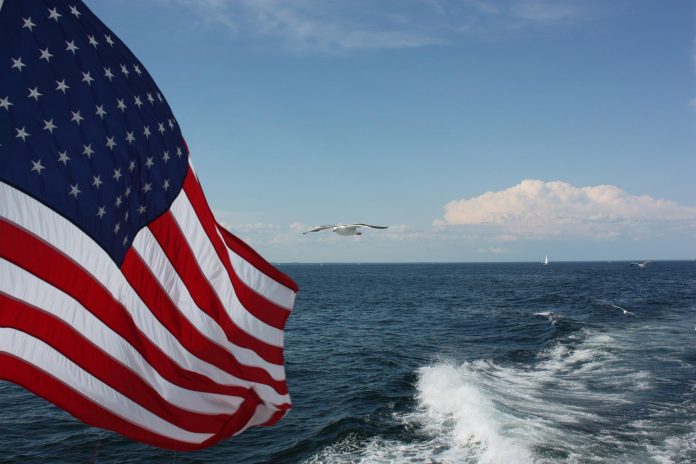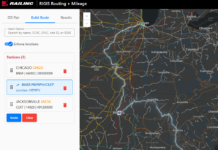
A new report by UMAS, commissioned by Ocean Conservancy titled “The Maritime Fleet of the USA—the current status and potential for the future” shows the scale of US shipping fleet emissions and opportunities to decarbonise the sector.
In 2018, carbon emissions from all US-flagged vessels amounted to around 26 million tonnes, approximately 2.4% of global shipping emissions, according to the report, and domestic shipping voyages accounted for about 70% of carbon emissions from the US-flagged shipping fleet.
“This presents a unique opportunity for US actions to effectively decarbonise the American maritime sector,” said UMAS, a sector focussed, commercial advisory service that draws upon the UCL Shipping Team.
According to the report, more than 40% of the energy used by the US fleet could be replaced with zero emissions solutions this decade. The report estimates that 17% of the current US fleet’s energy demands can be substituted with electrification.
“This would mean, for example, ships relying on battery electrification for shorter voyages or ships running off onshore electric power sources when in harbor,” noted UMAS.
The Gulf of Mexico and northwest coasts of the US are primed to move towards electrification given existing routes, according to the report, while a further 24% of the US fleet’s energy demands, oftentimes coming from longer voyages than battery power alone can support, can be met with zero-emissions fuels such as green hydrogen.
These technologies are already available and adopting them would require minimal infrastructure updates and can happen within the existing renewal schedule and will not require needing to scrap and rebuild ships ahead of schedule, according to UMAS, which said that “the Pacific, Gulf of Mexico and Great Lakes are top candidates for the adoption of zero-emission fuels”.
Dr. Jean-Marc Bonello, Principal Consultant at UMAS, pointed out, “There is enormous potential for the US to be a global leader in maritime decarbonization. This is due to three main factors: energy and technology expertise, lots of coastal and inland shipping activity and geographically favorable conditions.”
In order to meet climate targets set by the US government, the sector must transition away from the use of fossil fuels and shift towards true zero-emission fuels.
“The US is calling for the ambitious goal of 100% zero-carbon global shipping by 2050, and this report explores how we can lead the way through actions that decarbonize the US domestic fleet,” stated Delaine McCullough, policy manager for Ocean Conservancy’s Shipping Emissions program, adding, “Through policies and investments that drive innovation in vessel propulsion systems, zero-emission fuels and infrastructure, the US can strengthen domestic industry, create good jobs and accelerate the global shipping transition.”
By already relying on US production, the domestic fleet can introduce new zero-carbon vessels as older vessels are decommissioned or retrofitted on already existing schedules, according to UMAS, which said that “By acting early to decarbonise domestic shipping, the US can create new jobs and help build domestic firms’ market share globally in both shipping and emerging zero-emissions fuels, particularly hydrogen-based fuels.”
The report concluded that “eliminating carbon emissions from the shipping industry is essential if the US and countries around the world are serious about meeting the goals of the Paris Agreement as well as their own domestic climate goals.”
In another report from Ocean Conservancy and its partners at UMAS titled “Future Maritime Fuels in the USA – the options and their potential pathways”, it is discussed what alternative shipping fuels are already available and what a US transition to those fuels would look like.
The report finds that green hydrogen is the best option to transition the shipping industry away from fossil fuels.
“Producing green hydrogen-based fuels can kickstart the transition to new shipping fuels along promising green corridor routes within the US and can make key down payments that will drive further investments in renewable energy and feed the demand for climate action within the global transportation sector,” said Daniel Hubbell, shipping emissions campaign manager for Ocean Conservancy.
Hydrogen and ammonia are two fuels that both have the potential to power shipping vessels while emitting zero greenhouse gases, but when evaluated across their entire lifecycle of emissions, green hydrogen is the only option that can achieve the emissions reduction targets set forth in the Paris Agreement, according to the report.
Green hydrogen fuel is produced by splitting water molecules into hydrogen using renewable energy.
Other forms of hydrogen fuels, such as grey, blue or brown, rely on a mixture of fossil fuels and hydrogen that will continue to emit carbon dioxide and uphold fossil fuel infrastructure.
UMAS explains, “Currently, existing grey and brown hydrogen production methods emit the same amount of carbon dioxide as about one third of the European Union. Methane leakage throughout the production process is another reason for concern when producing grey or blue hydrogen because of its potency as a greenhouse gas – it’s 81 times more efficient at warming our atmosphere over a 20-year period than carbon dioxide is. Relying on carbon capture technologies to reduce the greenhouse gas emissions generated by the production of these types of hydrogen will require huge investments and the technology is not yet capable of capturing carbon dioxide efficiently enough.”





